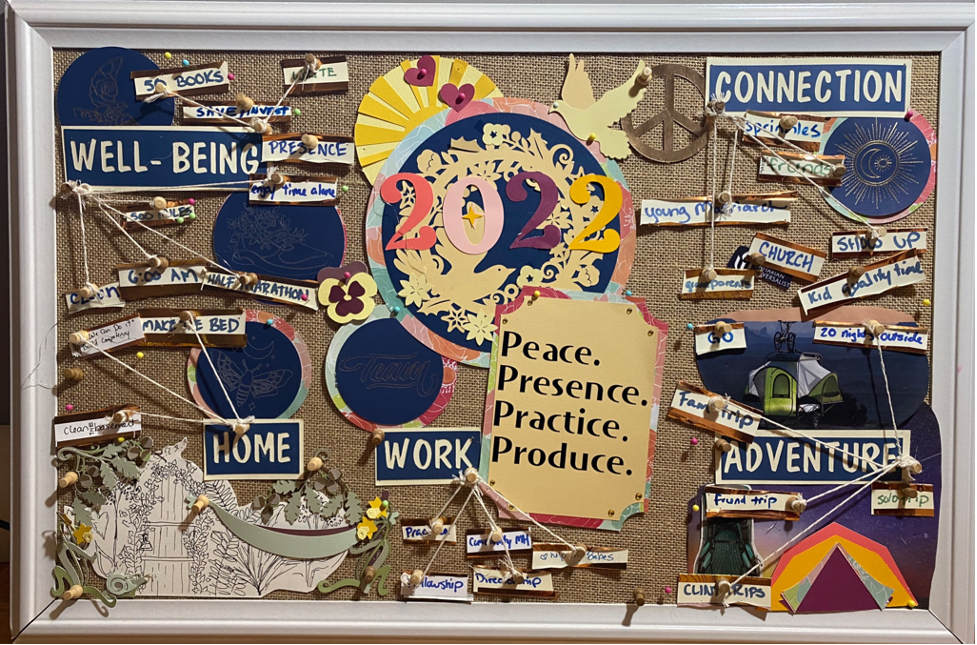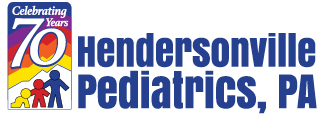December 2022:
Dr. E’s Mental Health Moment: Create a 2023 Vision Board
As a psychologist, I can't help but love New Year's Resolutions, as imperfect as they can be. Sometimes we are able to make good on our intentions, but just as often they fall by the wayside by February. Instead of picking a random goal and idealistically hoping to follow through, I prefer to instead do a more comprehensive review of what really matters, and then use this to guide choosing specific behaviors or outcomes that are manifestations of these values. Keep reading to learn more about creating a vision board!
Creating a vision board is a great thing to support your teenager in doing for themselves, or is something you can do together as a family. Vision boards allow us to start with broad hopes and aspirations, and then drill down to specific outcomes that reflect embodying those hopes in daily life. I particularly love this activity for teens, who are in the process of discovering who they are and creating a path toward who they want to be. Once complete, vision boards also serve as a daily visual reminder of our goals and are a way to keep track of progress throughout the year.
I've been making a yearly vision board for several years now and will be using my own board as an example. In creating this for yourself, make it your own: change, modify, experiment, and play to make it work for you! I have a paper-cutting machine (Cricut) that I used to make many of these elements, but that isn't needed: stickers, old magazines, colored paper, and art supplies will work just fine.
Supplies Needed:
- poster board or cork board: I use a 1.5'x2.5' cork board for my yearly vision board and find this works well in terms of size, and for being able to reuse elements each year. A posterboard of a similar size is cheaper and also works well.
- Pictures/images: these can come from magazines, drawings, images you print off your computer/the internet, etc.
- Major headings/life domains: You can write these out on construction paper, use magazine lettering or letter stickers, or type and print out
- Smaller pieces of paper to write specific goals (I cut mine from scrapbook paper and decorate with washi tape)
- "Extras": Stickers, push pins if using a corkboard (I use two different kinds: one for keeping things in place, and smaller, colorful pins to "check off" progress), adhesive, string, washi tape, markers, etc.
Elements:

Center image: Here, be creative and "big picture" in imagining what you'd like to focus on this year. You may have a theme or a quote, or a few keywords. Or, it may have no words at all, but just an image or collection of images.
Headings: What are the domains, or important areas in your life? These may include things like school, sports, hobbies or skills, future/college planning, relationships, health and wellbeing, projects, personal development, habits, leisure, and travel. My board includes well-being (physical and mental health), home (house/life management), work, connection (relationships), and adventure (travel). Most people can identify around four to six major areas.
Specific goals: Under each heading, on smaller sheets of paper, write out specific outcomes or things you'd like to accomplish in the year. Try to be as specific as possible in identifying measurable goals. If possible, it helps to attach specific numbers to your goals. For example, on my board, I have goals for the number of books to read and the number of miles to run. For some goals (for example, in relationships), it may be harder to identify numerical outcomes, but still, try to get specific in what it would look like to be meeting that goal. For example, one of my goals is to spend time with my extended family, so each time I host a family dinner, that is in line with that value.
Process:
First, "think big": I often start this process with a nighttime backyard campfire and time to daydream and reflect. Imagine yourself, or your family in one year. What would you like to be able to say about 2023? About what you did or accomplished? About how you spent your time? How about the ways you engaged with others and showed up in your life? Allow your mind to roam freely and don't get bogged down at this stage. What are your greatest hopes, not just in what you do, but in how you are? What is most important to you?
Next, I like to do a rough draft on paper. First, sketch out your "big picture" image and 2023 vision. What captures the spirit of what you hope for this year? Once you have this, identify the major domains in your life. Under these, list out specific goals you'd like to accomplish in each domain, remembering to keep these measurable as much as possible.
Once you have your rough draft, you're ready to start on the real thing! Use whatever supplies you have to craft your center image, your headings, and your specific goals. I like to use strings tied to the pushpins to connect the goals with headings.
Once your vision board is complete, hang it somewhere you can see it every day. Here's the fun part: Throughout the year, use a sticker or a pushpin to "check off" progress or meet a goal. This may be a one-time thing, or it may be a way to track positive progress. For example, for my goal of running 500 miles for the year, I like to add a pushpin for every 100 miles I run. You can also give yourself a pin at times that feel you've had a day that embodies a particular value. For example, if you have a goal of being a good friend, you might add a pin when you throw your friend a surprise birthday party, even if that wasn't a specific outcome you identified at the beginning of the year. If your goal is to get a 3.75 GPA, you may give yourself a pin when you work hard and get a good grade on a major project.
Here, you can see the domain (“well-being”), the specific goals (e.g., 500 miles), and the colored pins representing progress throughout the year.
At the end of the year, the vision board provides a great way to do an annual review. Where did you excel, and where did you fall short? In this, you may find that there are some areas that need particular attention, or perhaps that your goal setting was not realistic. You can then use this information to think about what you want to do on next year's board.
I've found doing an annual vision board gives me a way to reflect on my life, to be intentional about doing things that matter, and provides a form of daily visual accountability. If you try it, I'd love to see what you create! Happy 2023!
Dr. E’s Mental Health Moment is written by Elizabeth Conway Williams Ph.D., psychologist and behavioral health provider with Hendersonville Pediatrics.


